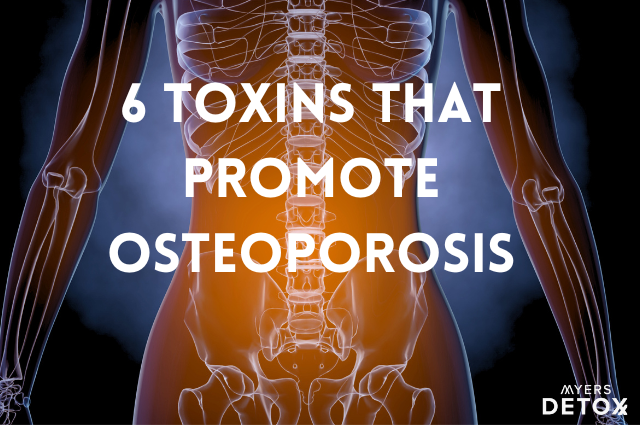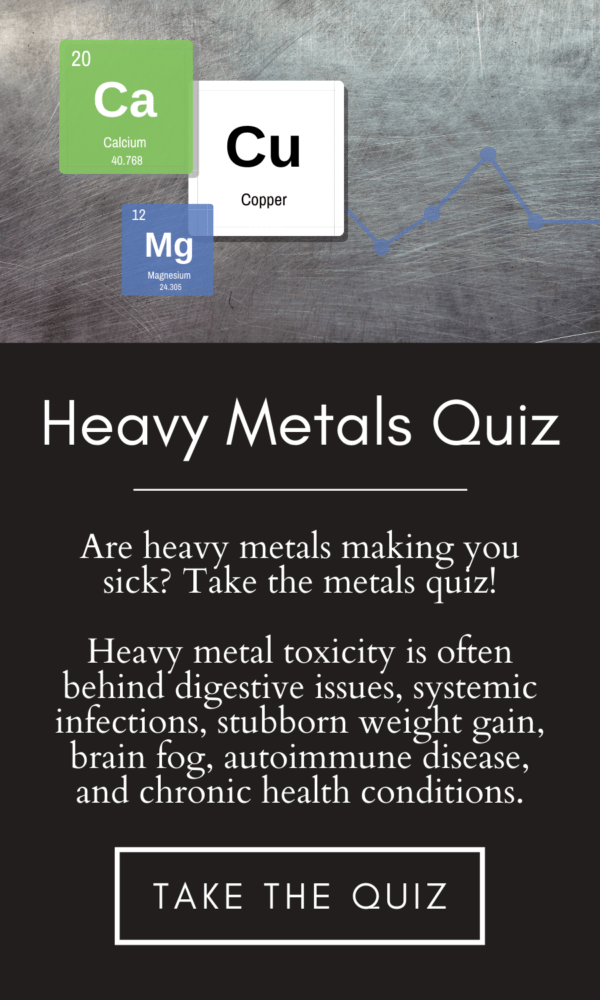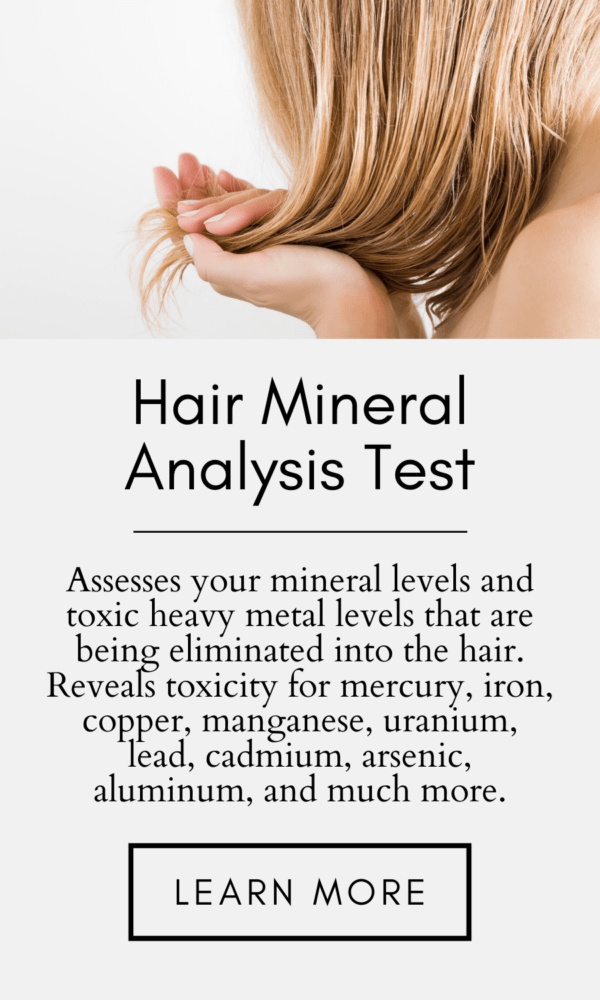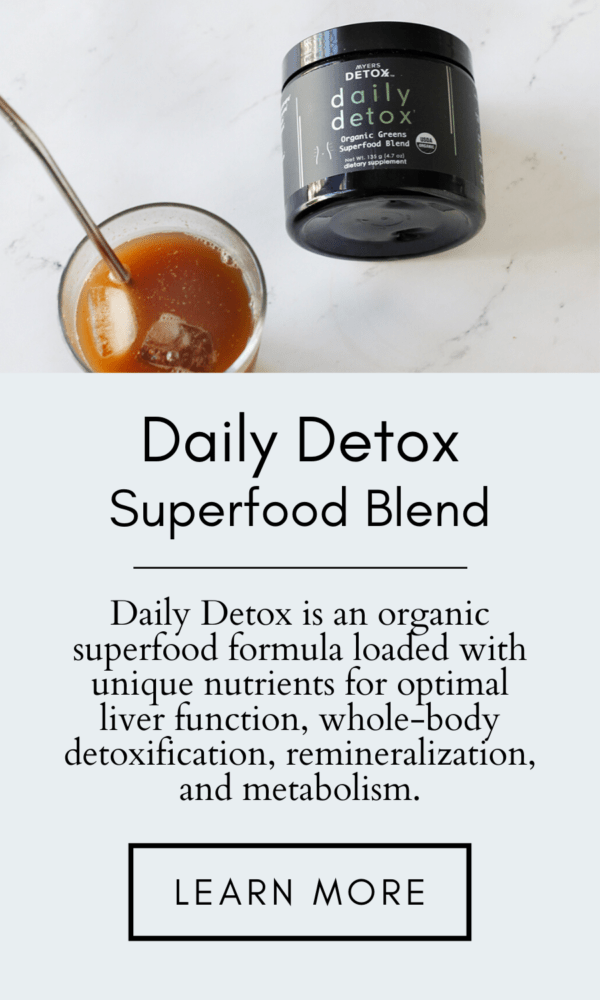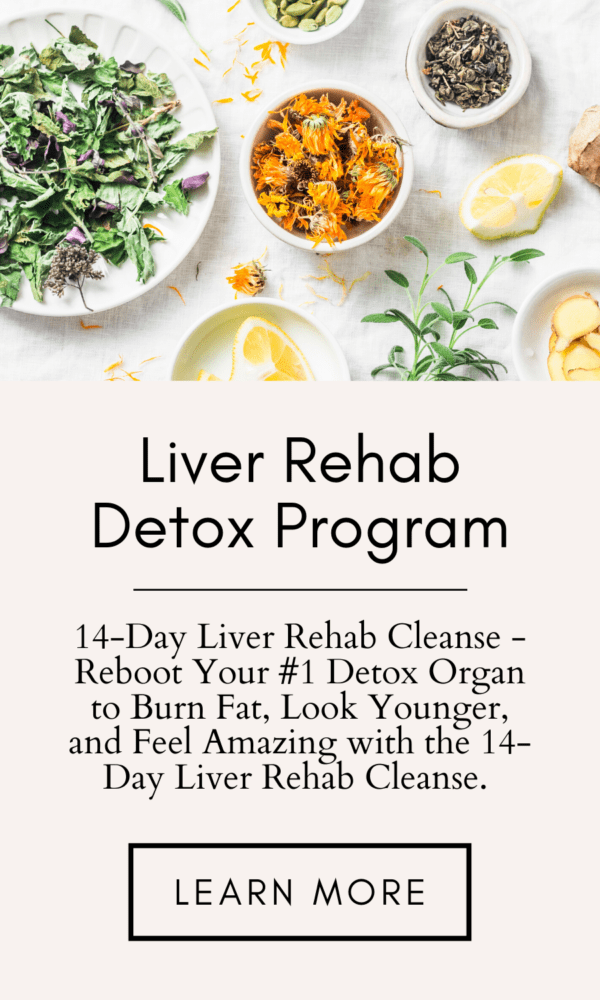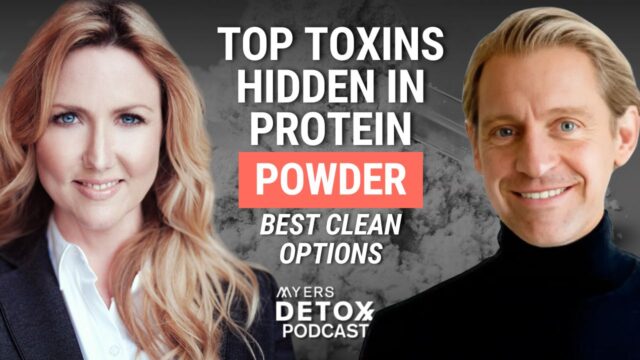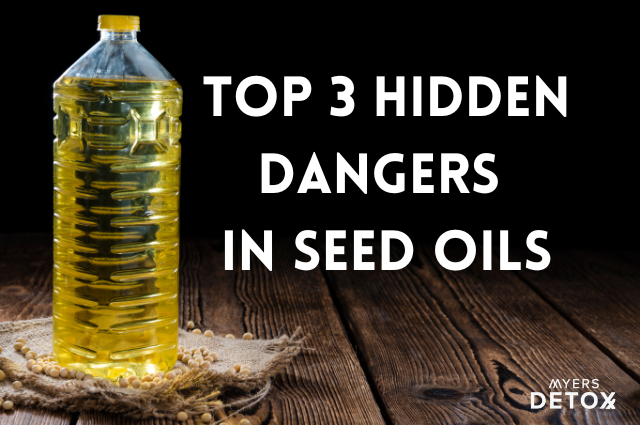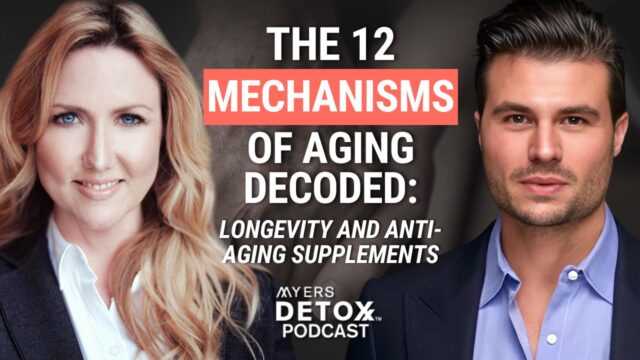Approximately 10 million Americans have osteoporosis, and half of all adults aged 50 and over are at risk for bone fractures[1]. Although bone loss is something that comes with age, these statistics clearly point to a more significant issue – our bones are disintegrating far too fast.
So what gives?
Along with the prevalence of bone disease, our environment has become a hotbed for toxic insults. Many toxins that you ingest (unknowingly) have an affinity for bone tissue or directly impact systems in your body related to bone building, such as your kidneys or endocrine system.
This doesn’t mean that you’re destined for brittle bones, but it is a wake-up call that we all need to be more aware of the toxicity in the environment and how it can impact bone tissue.
In this article, you’ll learn:
- The top 5 environmental toxins impacting bone health
- How heavy metals lodge themselves into your bone tissue and displace essential nutrients
- How plastics build up in your body and damage crucial hormones and organs that support bone building
- Which bone-damaging chemical can be found in 95% of Americans
- The silent toxin that no one is talking about that may be worse than all the others combined
- How to support your body’s natural ability to detox harmful toxins
Toxins Affecting Bone Health And Promoting Osteoporosis
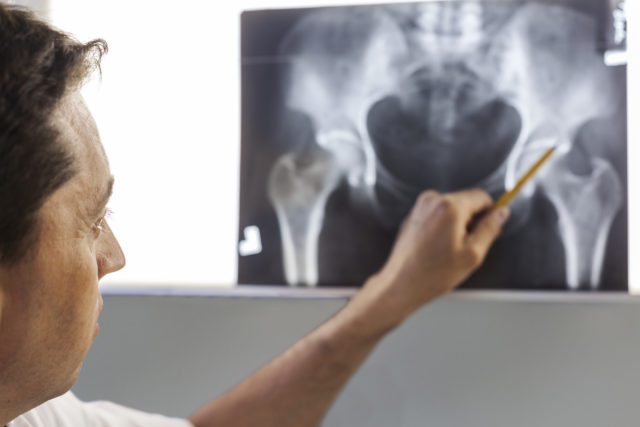
#1 Heavy Metals
Heavy metals are one of the most dangerous toxins for bones because they can lodge directly into your bone tissue and displace crucial nutrients necessary to maintain bone health, like calcium. At the same time, avoiding heavy metals can seem nearly impossible as these compounds can be found in everything from your drinking water and food to your beauty products and cleaning supplies.
Heavy metals are particularly dangerous because they can’t be detected in tests like urine, blood, or stool analysis because they’re directly incorporated into your bones.
Below are some of the most harmful heavy metals for bone health:
Lead
Lead is one of the trickiest metals because it weakens your bones and can’t be detected on x-rays or bone scans. It will, however, make your bones look more dense on Dexa Scans, mistakenly giving you confidence that your bone health is optimal when in fact, you are in great danger of fractures.
Unfortunately, when lead enters your body, it has a strong affinity for your bone tissue. In fact, around 90% of your body’s lead burden is hidden in your bones. To make matters worse, during menopause and andropause, when bone loss amps up, all that lead is released into your body. It’s no coincidence that this is also a time when diseases tend to show up[2].
Research shows that lead causes bone loss through three mechanisms[3][4]:
- Decreasing the formation of bone-building cells (osteoblasts)
- Facilitating bone-removing cells (osteoclasts)
- Inhibiting kidney conversion of vitamin D to its active form, thus impairing calcium absorption and deposition
To relieve your toxic burden of lead, the first thing you can do is to make sure your calcium stores are replete. When you add more calcium to your diet or supplement regimen, it can help to push lead out of your bones.
Aluminum
Much like lead, aluminum has a high affinity for your bone tissue and is all too happy to displace any minerals that you may be deficient in. And, of course, blood levels of aluminum are not a reliable source of information because this metal hides away in your tissues.
Aluminum also loves to accumulate over time; this is not a toxin that leaves your body willingly. As a result, years and years of low-level aluminum exposure can seriously threaten your bone health[5].
Similar to how calcium can replace lead, silica is an excellent nutrient for replacing aluminum in your bones. A high-quality silica supplement can help promote your body’s natural detox process in gently release excess aluminum while contributing to your bone strength.*
Mercury
Mercury not only has an affinity for your bone tissue, but it also loves to deposit in connective tissues that impact the health of your bones. Research shows that high levels of mercury may contribute to autoimmune diseases that affect bone and connective tissue, such as rheumatoid arthritis. Furthermore, the inflammatory impact of mercury can set the stage for osteoarthritis.
Both of these conditions can drastically impact your quality of life and increase the risk for osteoporosis[6][7].
Cadmium
Cadmium poses a serious threat to your bones, with studies showing that cadmium exposure can nearly double the risk of osteoporosis in postmenopausal women[8].
This heavy metal accumulates in your bones and kidneys, both directly and indirectly affecting bone health.
For example, due to its impact on your kidneys, cadmium can impair key kidney functions and damage osteoblast cells (the bone cells responsible for building strong bones). Cadmium also poisons a crucial enzyme that converts vitamin D to its active form in the kidneys, impairing calcium uptake.
Furthermore, cadmium damages your kidney’s ability to excrete toxins, which makes it even harder for your body to rid itself of unwanted metals[2].
Supporting your body in the natural clearing of heavy metals is no small feat, and you want to make sure that when you do go about detoxing metals, you have full detoxification support.
Many detox programs will upregulate your ability to remove metals from your cells, but they don’t help you escort those toxins out of your body. The result? A bunch of heavy metals floating around in your blood, lodging into your tissues and creating even more damage.
That’s why I put together my CitriCleanse Toxin Binder. This formula gently allows your body to naturally remove unwanted toxins and then seals the deal by assisting with their removal from your blood.*
#2 Pesticides
Pesticides are coming under more and more scrutiny as these chemical compounds continue to show up as causes and contributors to a range of health conditions. Currently, more than 70% of non-organic produce in the US contains traces of pesticides, which means that even the most careful among us are likely consuming more pesticides than we even realize[9].
One way in which pesticides damage your cells and tissues is by increasing oxidative stress. Oxidative stress initiates a cascade of inflammatory chemicals, which raises systemic inflammation and directly impacts bone health and remodeling.
Pesticides can also cause kidney damage, significantly increasing your risk of osteoporosis due to the intimate relationship your bone health has with kidney function[2].
While avoiding pesticides completely may be impossible, choosing organic food as much as possible is the most straightforward way to avoid an overload of these toxins.
#3 Phthalates
Phthalates are plasticizers that make plastic soft, increasing flexibility and durability. They’re present in a wide range of products, including water bottles, children’s toys, containers, food packaging, and food additives – to name a few.
Plasticizers decrease circulating levels of vitamin D and increase your risk for a vitamin D deficiency by 20%. This is particularly significant given that vitamin D deficiency is already so common. When vitamin D is deficient, it inhibits proper calcium utilization, making your bones weaker and more prone to fracture[10].
Studies show a direct correlation between blood levels of phthalates and lower bone mineral density, putting you at risk for osteoporosis[11].
#4 Bisphenols (BPA)
Much like phthalates, bisphenols are plasticizers that are added to a range of products, except these compounds make plastics more solid and hard. BPA is used in a range of manufacturing processes and can be widely found in the packaged food industry. In fact, the main route for exposure is through our water and food supply.
In a frightening statistic, research shows that up to 90% of the US population has detectable levels of BPA in their bodies.
BPA impacts bone health in several ways[12][13][14]:
- It shuts down an important enzyme for osteoblast (bone building) function.
- It inhibits the secretion of calcitonin, an enzyme that instructs your bones to stop releasing their calcium stores.
- It encourages apoptosis in osteoblast cells (cell death), inhibiting bone renewal.
- It acts as an endocrine disruptor, dysregulating estrogen activity, which is crucial for both osteoclast and osteoblast activity, impairing the entire bone remodeling process.
For both phthalates and BPA, awareness is the key to avoiding toxic consumption. While many companies still use these compounds, you can find alternatives to many of your plastic wear that will directly state “BPA and phthalate-free.” Furthermore, if you really want to do good by yourself and the environment, you can opt-out of plastic as much as possible and use refillable containers[2].
#5 Perfluoroalkyl Substances (PFAS)
PFAS are a class of compounds that are widely used as protective coatings for water and stain-resistant clothing, furnishings, and non-stick cookware. These compounds are known endocrine disruptors, and yet they are still allowed to be used in many different manufacturing processes.
As endocrine-disrupting chemicals, PFAS can disturb your body’s estrogen activity, which, as mentioned, has a direct impact on bone health. In fact, research shows an inverse relationship between levels of PFAS in the body and bone mineral density. And unfortunately, it is estimated that around 95% of people in the US have detectable PFAS levels[15][16].
In addition to their impact on hormones, PFAS may also impact bone health by binding to vitamin D receptors. When they bind to the receptors, vitamin D becomes unavailable to your body, and it’s crucial role in bone health is inhibited[17].
Furthermore, a recent study showed that these chemicals can impact bone marrow, stimulating the accumulation of fat cells. High levels of bone marrow adipose tissue (BMAT), is a strong risk factor for osteoporosis[18].
To avoid PFAS, watch out for non-stick coatings (especially on cookware), and prevent stain or water-repellent clothing and furnishings as much as possible.
The grapefruit citrus pectin in CitriCleanse is amazingly effective at aiding your body’s innate ability to mobilize toxins and heavy metals. You need a binder like CitriCleanse when you’re doing any type of detox protocol that encourages your body to excrete and transport these impurities so that they are prevented from being reabsorbed or redistributed elsewhere in the body.
#6 Air Pollution
While lifestyle factors and aging play a clear risk in osteoporosis development, recent studies show that air pollution may be a sneaky factor that’s gone under the radar for years.
In a recent meta-analysis of nine studies, investigators found that exposure to tiny-particle pollution (also known as PM2.5) has a direct correlation with increased risk for osteoporosis and hip fracture. The study looked at 9 million patients and concluded that with each increase in PM2.5, the risk for osteoporosis nearly doubled[19].
And while the Environmental Protection Agency does its best to regulate air pollution, another 2017 study showed that PM2.5 levels far below the EPA’s air quality standards were associated with increased hospitalization for bone fractures[20].
In addition to the inflammation and oxidative stress produced by air pollution, research suggests that the toxic chemicals in polluted air may directly impact bone cells. Specifically, tiny-particle pollution may stimulate the production of osteoclasts, the cells that break down bone, while simultaneously inhibiting the production of osteoblasts, the cells that build bone[21].
So, what’s floating around in our polluted air?
One of the major concerns is nitric oxide, which is emitted from the burning of fossil fuels and car exhaust. Research shows that nitric oxide and nitrogen oxide can significantly impact bone health, with exposure to these chemicals deteriorating bones almost twice as fast as the natural aging process[22][20].
Unsurprisingly, heavy metals are another culprit found in air pollution, along with black carbon and ammonium.
How to Preserve Your Bone Health and Help Your Body Detox From Everyday Living
While reducing your toxic exposure is essential, the reality is that toxins – including heavy metals – are still everywhere in our environment. Unfortunately, this means that even after you take the steps above to mitigate metal exposure, you will still likely ingest heavy metals unknowingly.
And then there is also the issue of all the metals you’ve already come into contact with throughout your life. Metals don’t easily leave your body, so you may have decades of heavy metal accumulation just sitting in your cells.
Detoxing heavy metals can be a bit tricky for a couple of reasons:
- Heavy metals can lodge into your cells and tissues and can be challenging to release.
- Once they are released from your tissues, you need to make sure they exit your body as quickly as possible so they don’t re-lodge and cause more damage elsewhere.
When supporting your body’s natural ability to detox, it’s wise to use a binder to help ensure that pollutants are flushed out normally. This helps prevent the contaminants from being reabsorbed or redistributed elsewhere in the body. That’s why I created CitriCleanse.
The grapefruit citrus pectin in CitriCleanse is amazingly effective at aiding your body’s innate ability to mobilize and excrete these impurities. Grapefruit citrus pectin has been processed in a way that makes its molecules small enough to cross the intestinal barrier and to get into the bloodstream. This allows the grapefruit citrus pectin to gently surround and support the excretion of contaminants that are both freely circulating in your bloodstream as well the ones that have become lodged in tissues and organs.
How does it work? CitriCleanse uses a 1-2-3 system to support the elimination of toxic heavy metals:
- Cilantro extract helps your body to naturally pull heavy metals from hidden places like fat stores and the liver[16].
- Grapefruit citrus pectin acts as a natural support binder – gently surrounding and removing toxins from the body[17].
- Fulvic acid and humic acid mineralize the body, pushing out and supporting your body as it displaces metals like mercury and protects you so they can’t do damage as they leave your system[18].
CitriCleanse is effective, but it’s also gentle enough for daily detoxifying. It’s easy to use, and it even tastes good — just mix it into water and drink it every morning.
Takeaway
Osteoporosis is a condition that primarily affects the older generation, but the damaging impact of environmental and emotional toxins can start at any age. In other words, it’s never too early to start paying attention to bone health.
Avoiding pesticides, plastics, non-stick cookware, and sources of heavy metals is a great place to start, but your body also needs support clearing out these toxins. That’s why I recommend CitriCleanse.
Grapefruit citrus pectin – a key component of CitriCleanse – is amazingly effective at supporting your body’s natural ability to mobilize toxins and heavy metals. And you need a binder when you’re doing any type of detox protocol, program, or supplement to prevent heavy metal absorption and support your overall health in a toxic world.
*These statements have not been reviewed by the FDA. These products are not intended to diagnose, treat, cure, or prevent any disease. They are not intended to replace any medication or healing modality prescribed by your medical doctor.


